CSotD: Finding Our Place
Skip to comments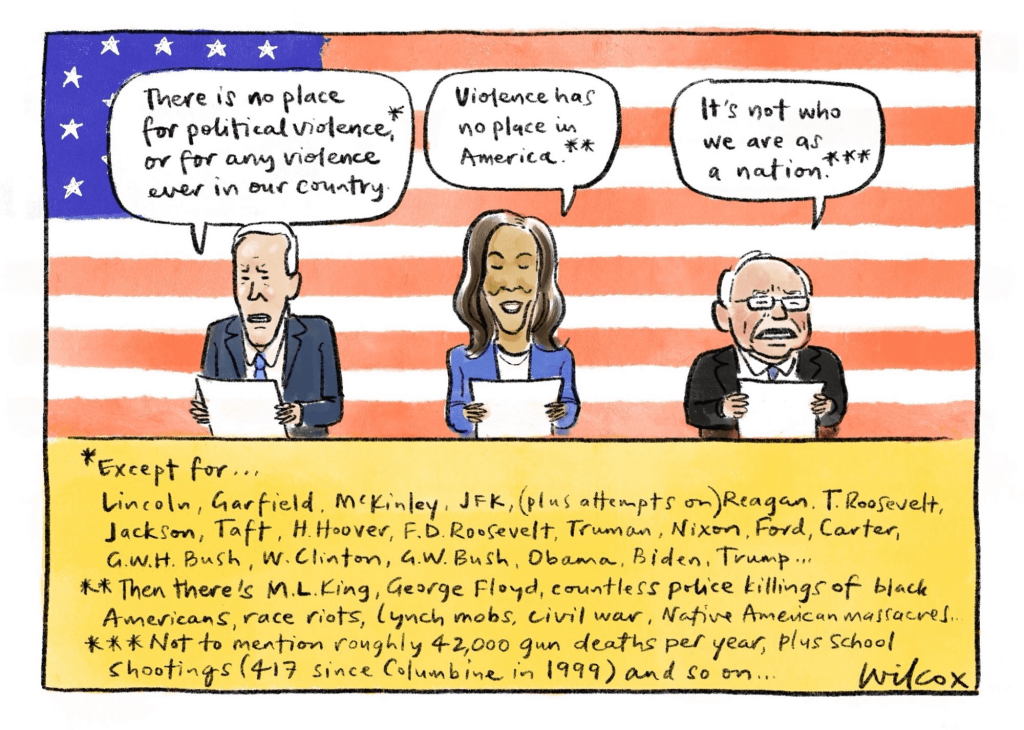
My initial response to this Cathy Wilcox cartoon was negative, and I still think it is politically unfair, if only because she features Biden, Harris and Walz decrying violence when it is the Democrats who have attempted to limit the problem.
There’s a great deal more hypocrisy in the “thoughts and prayers” approach of those who then resist all legislation on the topic.
Her list is slightly inflated, but she’s right that we have a history of violence, though I’m not sure an Australian is the best critic of that, given how they have treated their native people and their tradition of celebrated bushrangers.
But criticizing their history doesn’t change ours.
Still, while our history and current gun culture may make it seem myopic and hypocritical to say “That’s not who we are,” I wouldn’t focus the criticism on a political party which aspires to bring out a better side of a people, given that the majority of American consistently favor stricter laws controlling guns.
Besides, if that’s really who we are, there’s nothing we can do about it and we might as well all just put on Kevlar jackets and give up. Blame it on destiny.
But enough blaming of the messenger.
Let’s dig into the problem, because she’s certainly not the only person to have brought it up.
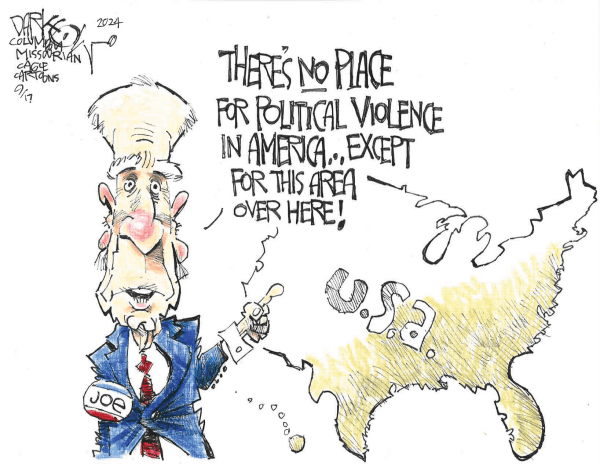
John Darkow is an American and he levels that same criticism at Biden, ignoring the executive orders by which the president has attempted to foil legislative resistance.
Changing well-imbedded injustice often begins with seemingly futile aspirations. The abolition movement took a shamefully long time to change the notion that slavery was an appropriate, necessary economic practice, and, similarly, the women’s movement — which grew out of the abolition movement — had to fight a well-established tradition of our existence as a male-dominated society.
It goes back to the sentiment expressed by GB Shaw and Bobby Kennedy, “Some men see things as they are, and ask why? I see things as they could be, and ask why not?”
For this topic, a bit ironic given how Bobby’s life ended. But then a lot of people died in slavery and a lot of women died without ever being able to cast a ballot or open their own bank accounts.
So maybe we need to say “There shouldn’t be a place for violence” rather than citing the majority opinion that it isn’t appropriate. But that still seems defeatist.
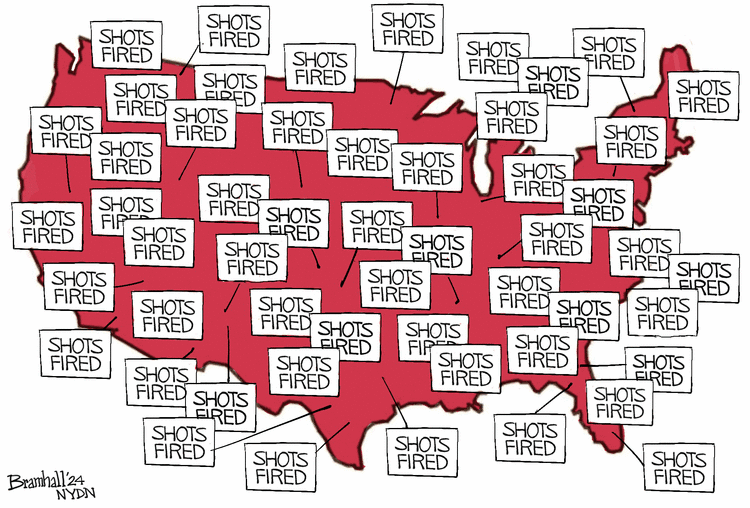
Bill Bramhall depicts things as they are, perhaps taking the Lenny Bruce approach of insisting that “should be” is just a damn lie.
However, if you’re going to give up, why bother raising the issue? I suspect Bramhall is hoping to inspire reform rather than turning his back on the problem, and I am quite sure that the trio Wilcox condemns are doing the same.
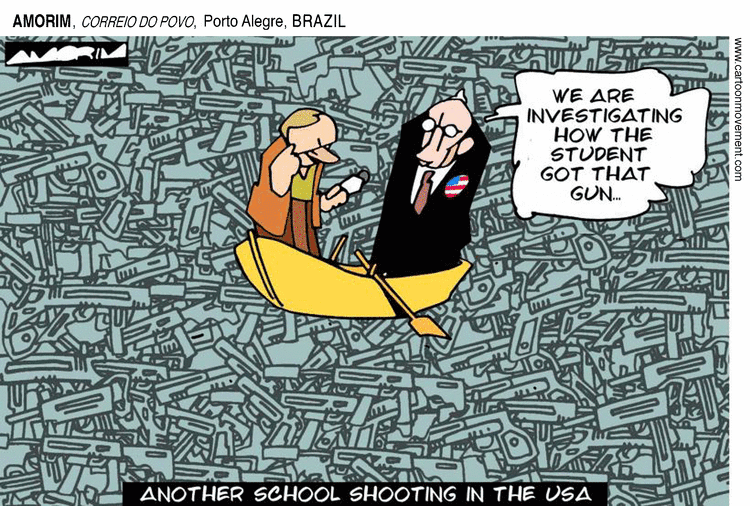
Amorim (Cartoon Movement) makes the critical point that we simply have too many guns and not enough restrictions on their availability. Aside from the insanity of purchasing an assault rifle for a child under treatment for emotional problems, as happened in the Sandy Hook shootings and may also be true in the latest school shooting, there are any number of mass murderers who had no trouble getting guns.
The Columbine killers had a friend buy them a gun at a gun show, where security is a tasteless joke, and there was a case shortly thereafter where a kid went to his grandfather’s house, where he knew guns were not locked up, and took one for a shooting at his school.
Meanwhile, as noted here two weeks ago, Georgia Governor Brian Kemp boasted about the F he received for his state’s lack of gun control, calling it a “badge of honor.”
JD Crowe noted Kemp’s bragging, but school shootings and the fact that firearms are the leading cause of death for American children will not stop other politicians from happily accepting money from pro-gun groups and running for office on a pledge to oppose gun control legislation.
Donald Trump has even responded to attempts on his own life by selling related merchandise and raising campaign money based on the latest event, which he seems to see as something to celebrate.

As Jack Ohman (Tribune) points out, Trump seems to see no connection between his hateful, violent rhetoric and the violence not just in our society but even in his own sphere, blaming it instead on his opponents.
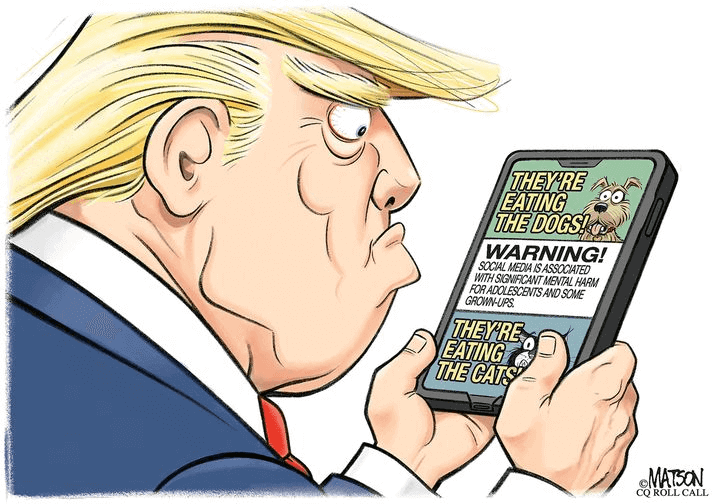
RJ Matson doesn’t connect Trump’s lying and hatemongering with the attempts on his life, but he does note that it can inflame unstable people, a reference not to the assassination attempts on him but rather to the flood of bomb threats and threats of shooting currently directed at the Haitian victims of Trump and Vance’s racist, nativist hostility.
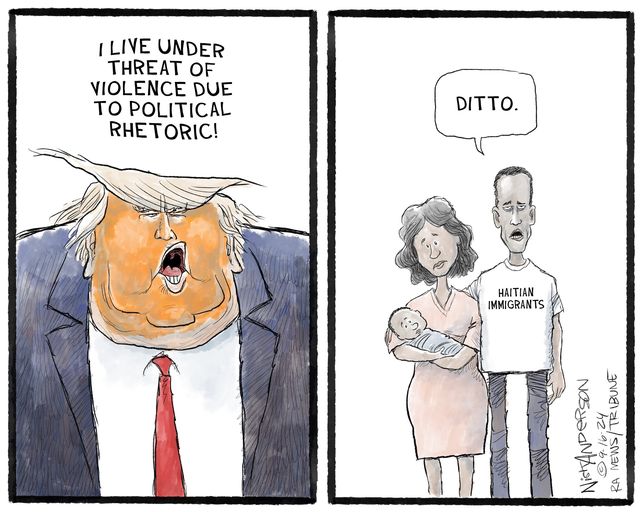
However, if Matson doesn’t make the connection, Nick Anderson (Tribune) does, and it is worth once more pointing out that the Haitians in Springfield are legal migrants brought in to fill jobs that benefit the region’s economy, despite the lies and hatred poured on them by the senator of their adopted home.
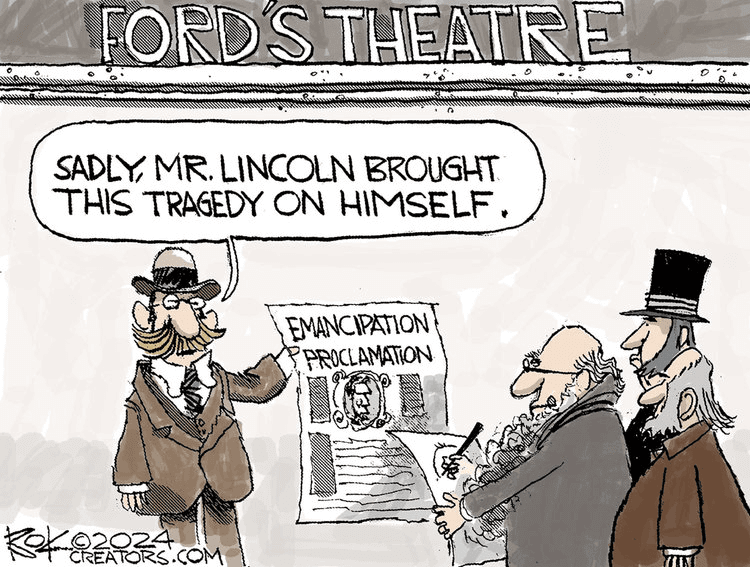
Chip Bok (Creators) compares Trump to Lincoln, an odd interpretation of history which Trump himself has arrogantly committed, and suggests that, just as Lincoln’s freeing of the slaves infuriated John Wilkes Booth, so, too, Trump’s fantastic, historic something or other has drawn violence from somebody or other.
It’s not clear what Trump accomplished in his four years that Bok can compare to freeing the slaves. Perhaps it was his freeing of the Taliban.
If Bok’s logic is unclear, so, too, is that of Trump’s would-be assassins. Booth may have been a fanatic, but he had clear motivation and was continuing a civil war in which 750,000 had died, making one more victim at least logical if reprehensible.
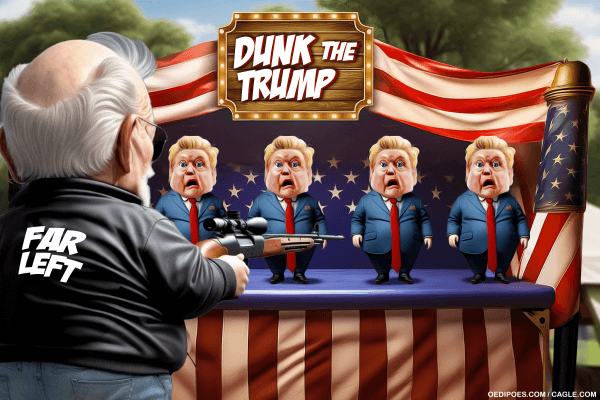
Bart Van Leeuwen offers what seems like a “hold my beer” response to Bok with a cartoon that completely misrepresents both of the shooters, blaming the attempts on a non-specific “Far Left.”
We’re still parsing the twisted reasoning of the golf course lurker, but both he and the earlier shooter were former Republicans and, whatever their current muddled allegiances, anything but “far left.”
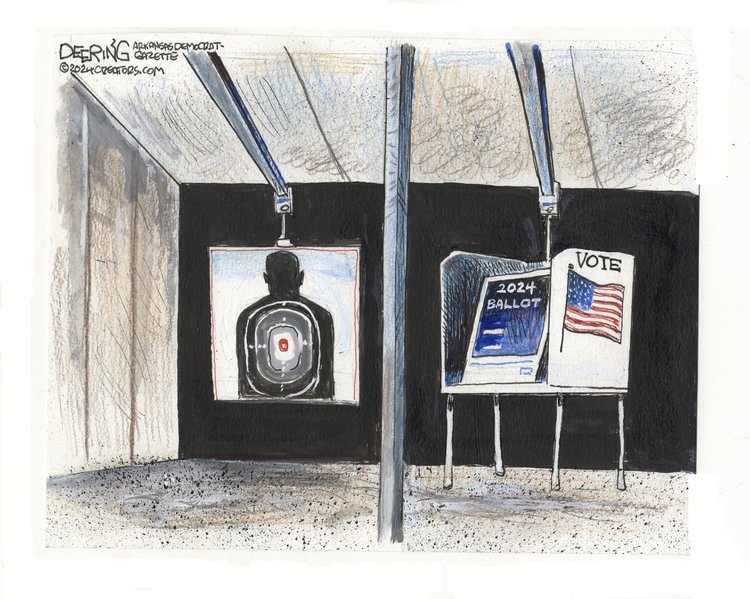
John Deering (Creators) demonstrates the opportunity we will soon have to show the world — and ourselves — whether death and violence should have a place in America.


Comments 15
Comments are closed.